Strangler figs are one of the distinctive features of rainforests. They start life as epiphytes half-way up the forest canopy, germinating from seeds in bird or bat droppings that have landed on a suitable tree branch. The young seedling sends roots sinuously down the trunk of the host tree while growing its branches up towards the forest canopy. As light severely limits the growth rates of tree seedlings on the forest floor, strangler figs gain a huge advantage by starting off life near the canopy courtesy of its host tree. Once the fig’s roots reach the ground they penetrate the soil where the added supply of nutrients and water spurs rapid growth of both the branches and aerial (above-ground) roots, which progessively envelop the host tree.
Seedlings can also occasionally germinate on large boulders, cliff faces and even old ruins (e.g. the ruins around Anchor Wat in Cambodia). The height at which the seedling germinates, as well as the orientation of the host dictates how the roots will grow. If a tree with a strangler on it is knocked over into a diagonal growth position, the roots will start to grow vertically directly down to the ground. An impressive example of this diagonal growth with vertical roots can be found on the famous Curtain Fig Tree outside Yungaburra in the Tablelands.
Mature figs often either kill or out-live their host, leaving a hollow core in the network of thick roots that make up the trunk of many mature stranger figs. The cause of host death is not certain and while the name suggests that the roots eventually strangle the host trunk, hosts will also have to compete with the fig for canopy space and nutrients and water in the surrounding soil and this could severly weaken the host tree. However a recent recent study of trees that survived Cyclone Yasi suggests that stranglers may actual help their hosts survive these extreme storms, perhaps by adding structural support to their host in the face of cyclonic winds.
Mature stranger figs reach enourmous size and can dominate the canopy. There are several huge figs at the bottom of Bambaroo track (unknown species) which can be seen on the satellite view of Google Earth and have canopies exceeding 50m in diameter. The largest tree in the world (in terms of area covered) is a Banyan fig (also a strangler) that covers a massive 4 acres.
Figs belong the Family Morace, and the group known as stranglers (starting off as epiphytes on a host tree or rock) belong to the subsection Urostigma. There are around 1,000 species of Ficus worldwide and Australian rainforests host about 40 species. Of these, 18 are stranglers.
Ficus watkinsiana is one of several species of strangler figs that occur around Paluma. A good example can be found on the Paluma “Rainforest Track” opposite Smith Crescent. This specimen has a dedicated platform in front of it, including an extension that allow photographers to step back so that they can get most of the tree in a photo.

Identification of figs is not easy and professional taxonomists may even resort to electron microscope imagery to detect minute differences in the strucuture of the fruit to confirm identification. However, based on distribution records, leaf size and fruit shape/size I am pretty confident that this one is indeed F. watkinsiana. Other species of strangler that have been identified on the H-track are F. destruens and F. obliqua. F. destruens has similar leaves but the fruit, while similar in shape are significantly smaller than F. watkinsiana. Along the H-track, starting from the JCU house, there are two specimens of F. destruens labelled with white tags (numbers 2 and 7). F. obliqua can be identified from its small globular organge coloured fruit. There is a specimen about 20m from the first right hand bend of the H-track starting from Lennox Crescent on the left side of the track.
While strangler figs have a fascinating growth habit, all figs also exhibit amazing and bizarre reproductive characteristics that would require a separate post to describe in full. One fact worth noting is that almost every species of fig is dependent on a single species of tiny wasp for pollination! A scary fact since all it would take is the extinction of one species of insect to wipe out an entire species of majestic fig trees! We usually think of insects as ubiquitous and prolific, but a recent scientific global survey found that 40% of all insect species are declining and that a third are endangered.
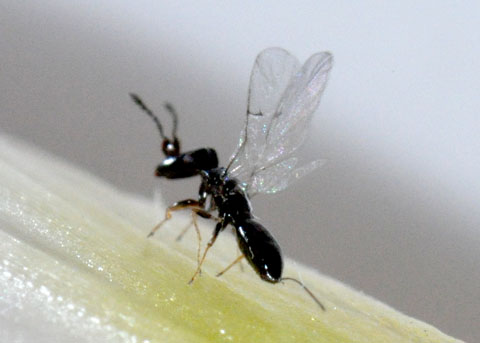
For our local Ficus watkinsiana the polinating wasp is Pleistodontes nigriventris. You may never see one ( I couldn’t find a picture of it on the web) but you would certainly know if it went extinct!
Text and photos (unless indicated) by Jamie Oliver

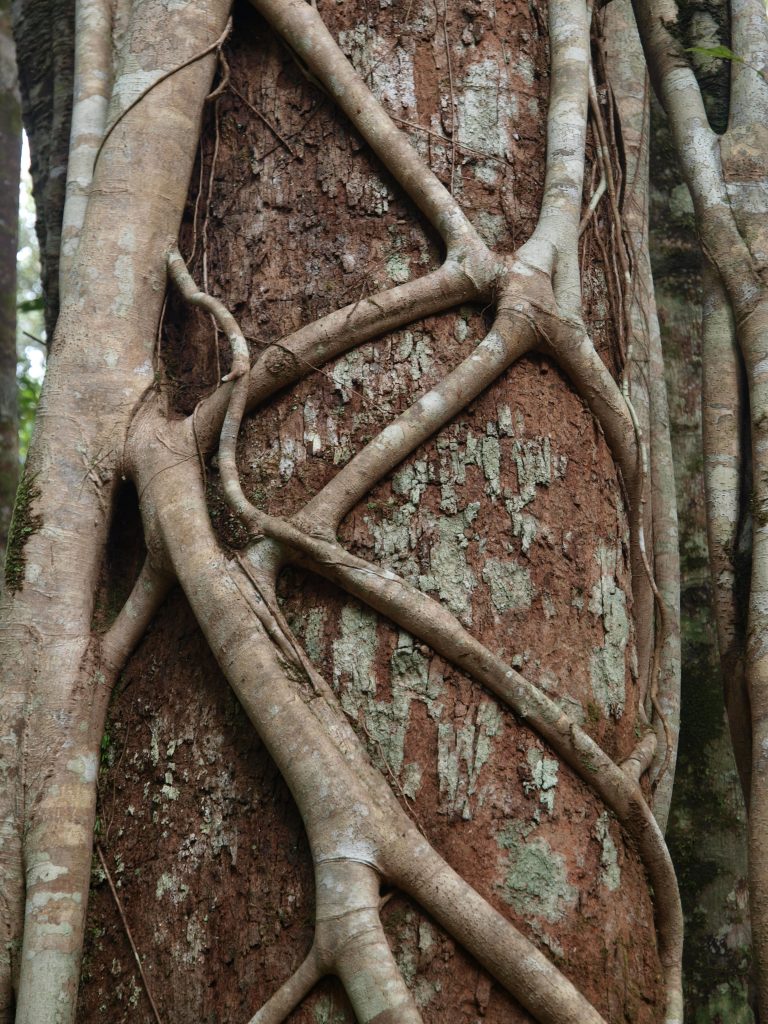

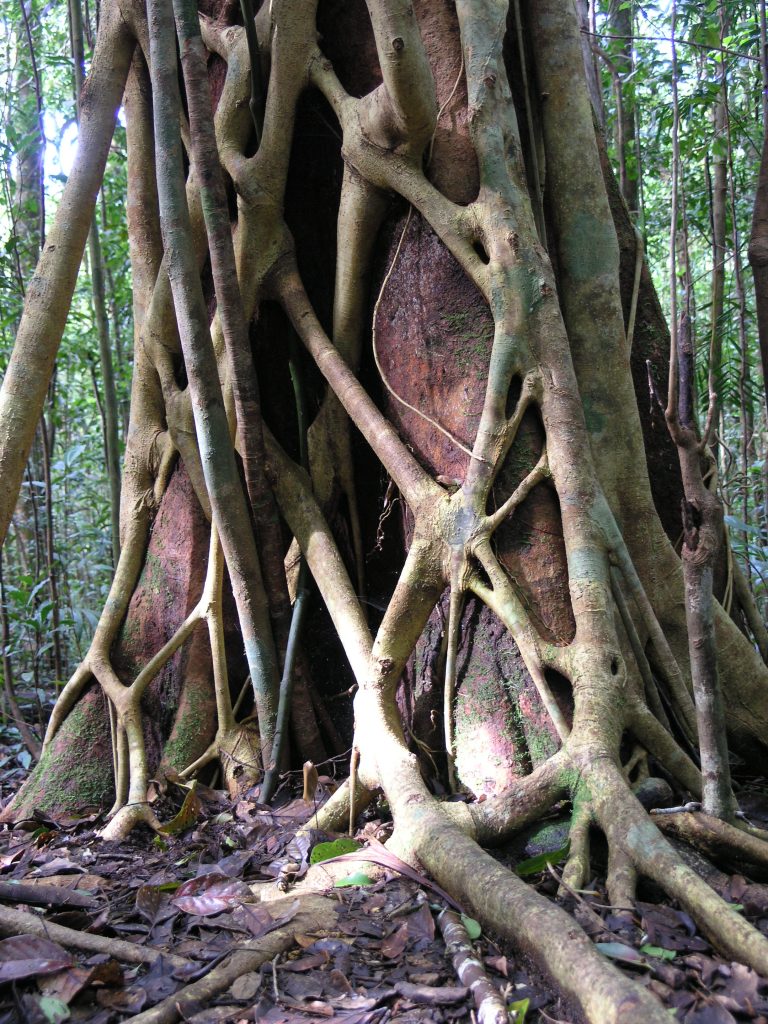
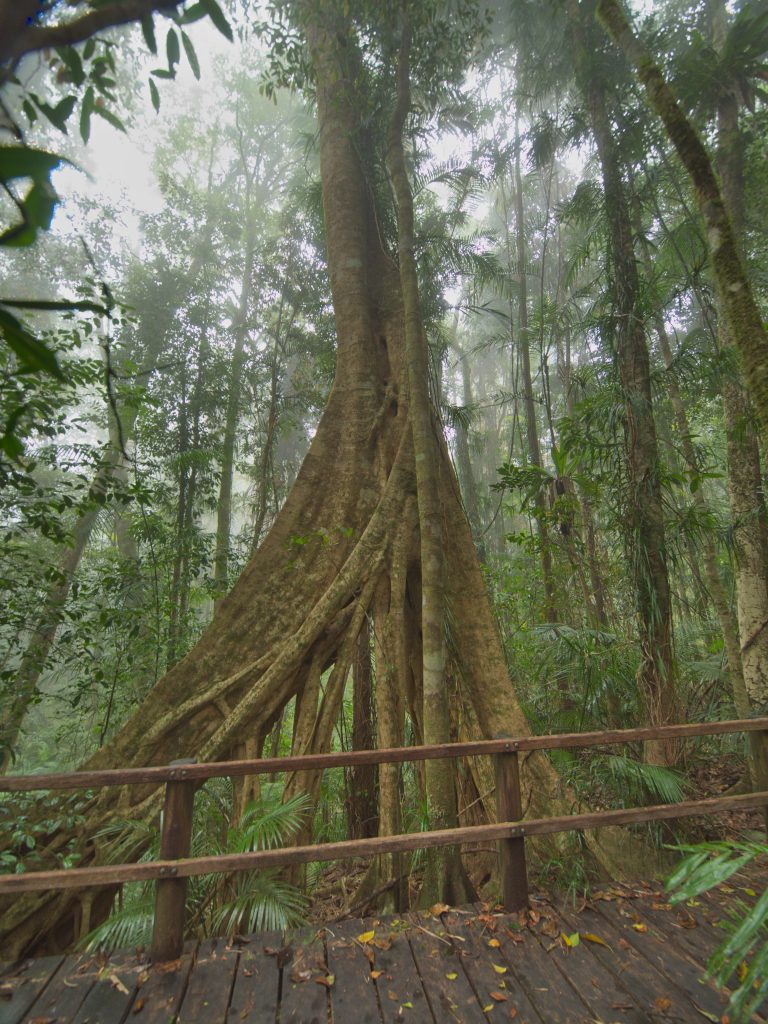
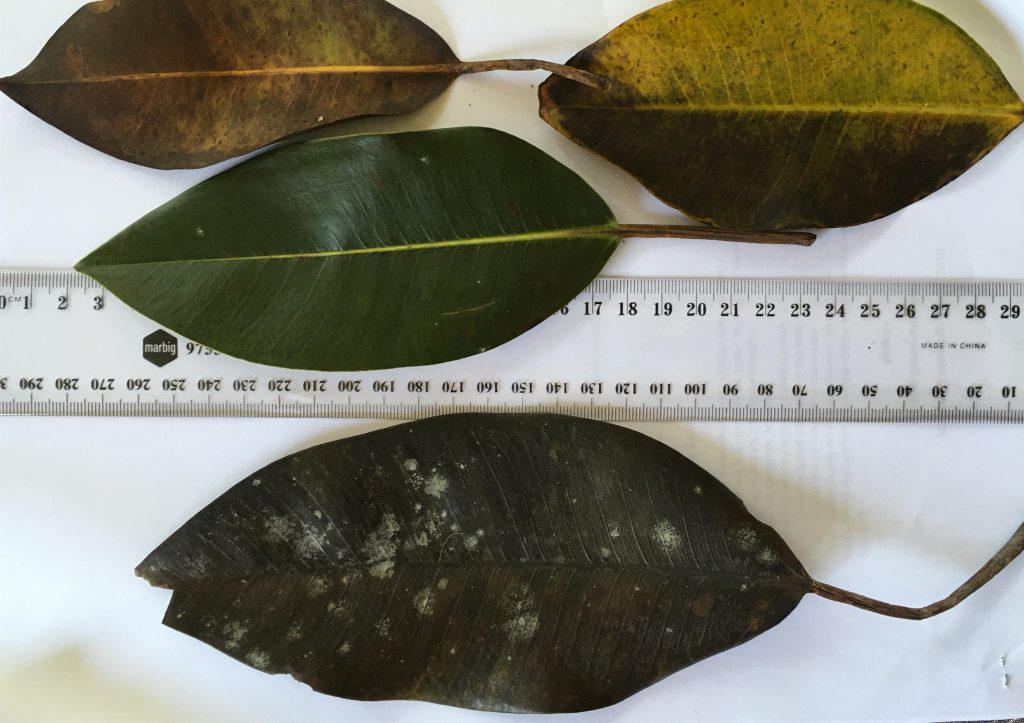

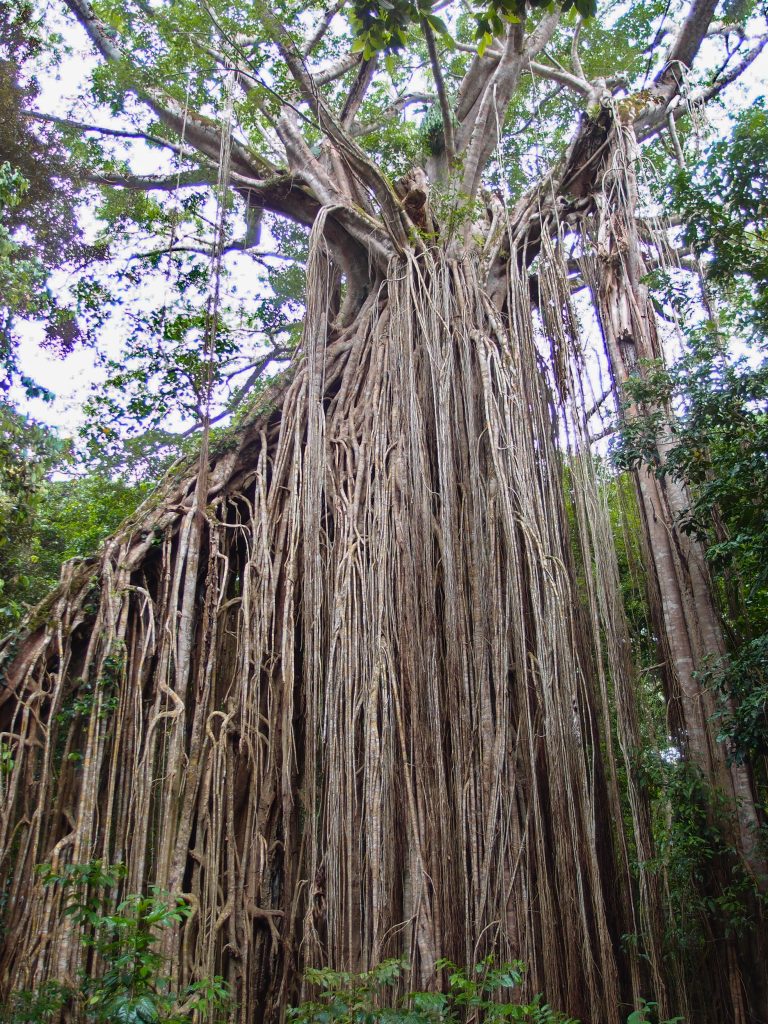
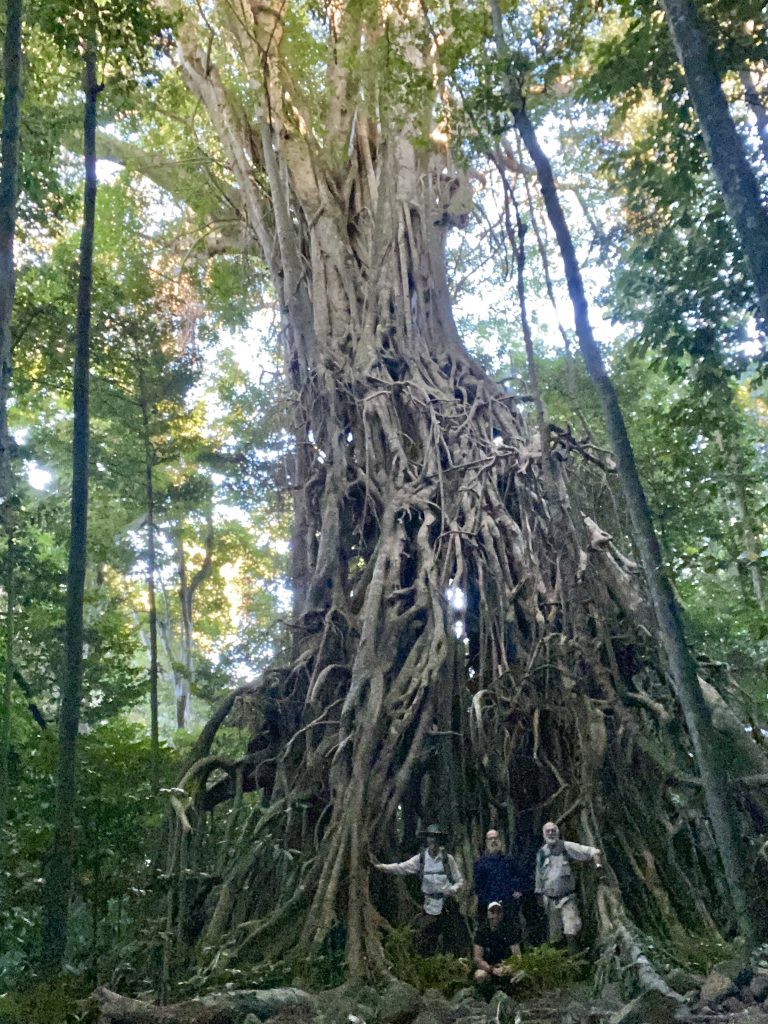

WOW Jamie, fantastic article. Kind regards Cam Mackenzie